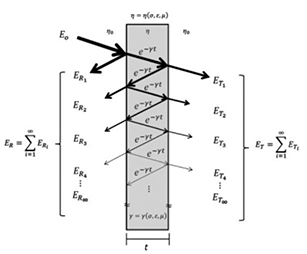Characterization of EMC Shielding Materials

Electromagnetic shielding options have been greatly advanced by the introduction of new nanomaterials. Traditional methods of evaluating the shielding effectiveness of these materials do no adequately convey the relative effectiveness of these materials in actual applications. This project investigates the methods used to quantify the effectiveness of nanofiber composite shielding materials and proposes new methods that are better able to describe the effectiveness of these materials when used to construct shielded enclosures.
Publications
- B. Villacorta, A. McDowell, T. Hubing and A. Ogale, “Polarized-wave electromagnetic shielding of anisotropic carbon nanomodifier-based LLDPE composites,” Polymer Engineering and Science,vol. 55, no. 2 pp. 299-307, Jan. 2015.
- A. McDowell and T. Hubing, “Analysis and comparison of plane wave shielding effectiveness decompositions,” IEEE Transactions on Electromagnetic Compatibility, vol. 56, no. 6, Dec. 2014, pp. 1711-1714.
- A. McDowell and T. Hubing, “Decomposition of Shielding Effectiveness into Absorption and Reflection Components,” CVEL-14-058, Apr. 10, 2014.
- B. Villacorta, T. Hubing and A. Ogale, “Influence of composite electrical properties on the VHF-UHF electromagnetic shielding characteristics of polyethylene-carbon nanoparticle composites,” Composites Science and Technology, no. 89, Oct. 2013, pp. 158-166.
- B. Villacorta, A. Ogale and T. Hubing, “Effect of heat treatment of carbon nanofibers on the electromagnetic shielding effectiveness of linear low density polyethylene nanocomposites,” Polymer Engineering & Science, vol. 53, issue 2, Feb. 2013, pp. 417-423.
- B. Villacorta, T. Hubing and A. Ogale, “The effectiveness of carbon nanofiber-based nanocomposites,” Plastics Research Online, Society of Plastics Engineers, 10.1002/spepro.004422, Sep. 2012.
|

